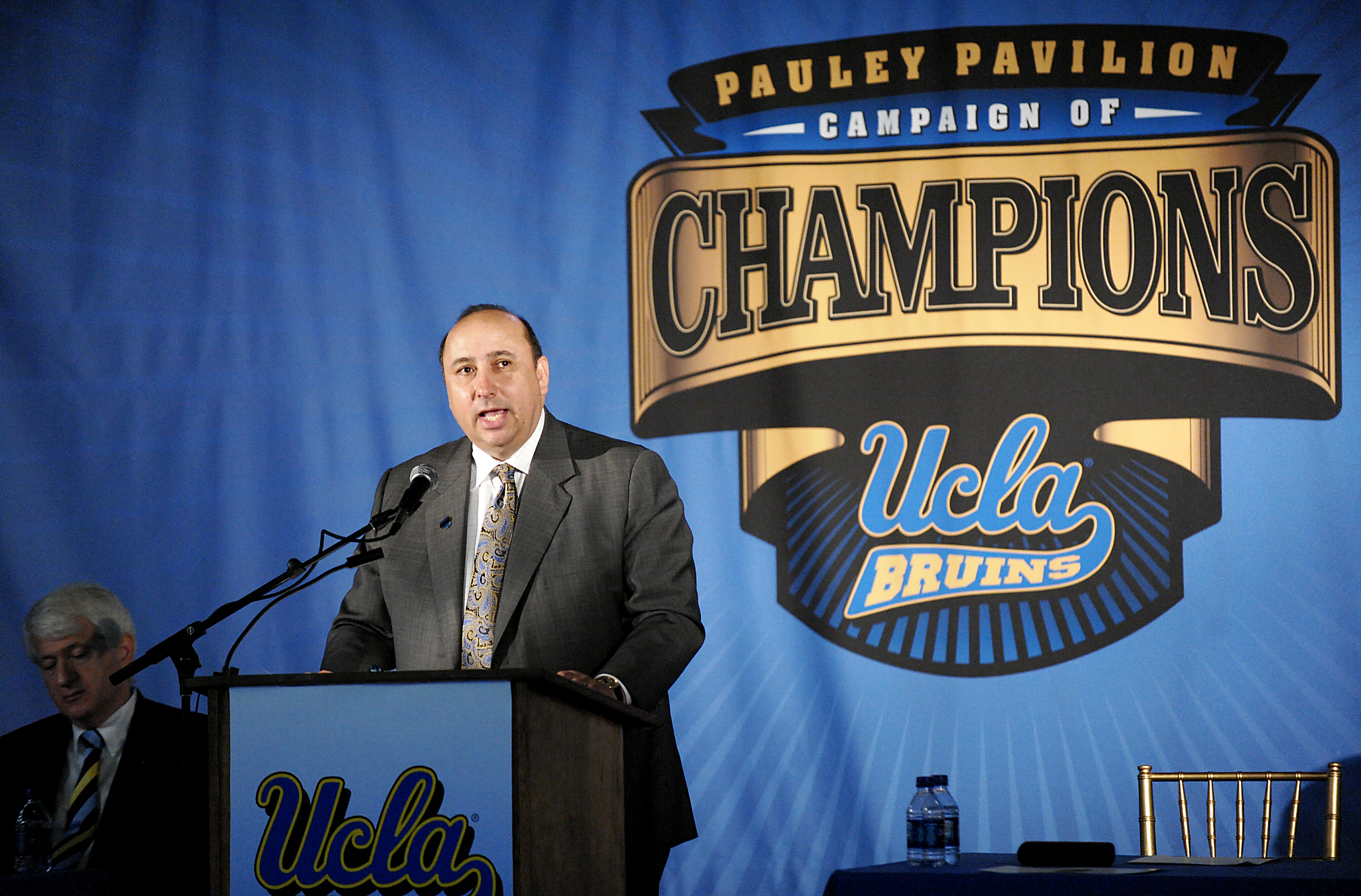
As you may have heard by now, Pauley Pavilion is slated to undergo a massive renovation over the next few years. Pauley’s new face-lift, to be unveiled in 2012, will cost an estimated $185 million.
But is it worth it?
There are engineering concerns. Pauley is tucked neatly in the center of campus, and there is little surrounding space to work with.
There are logistical concerns. UCLA basketball will be displaced for at least the 2011-2012 season. Who wants to drive to the Staples Center, Orange County or worst of all, Inglewood, to support Bruin hoops?
There are functional concerns. In a letter to the UC Regents president, former chairman of the renovation project Richard Bergman writes, “The proposed design plan does not solve Pauley Pavilion’s functional deficiencies, will make deficiencies worse, and will not provide fans with an experience comparable to modern arenas.”
Bergman’s got a point. We shouldn’t spend $200 million on a little makeup if the touch-ups won’t produce a beauty.
And what about the Bruins’ legendary homecourt? There’s nothing vintage about the proposed high-definition scoreboards and LED screens.
As it is, Pauley provides only a small home-court advantage. Occasionally, a publication will discuss how hard it is to play in Westwood, but if you’ve seen a game in Pauley and then, say, Duke’s Cameron Indoor Stadium or Kansas’ Allen Fieldhouse, it isn’t much of a comparison.
In typical L.A. style, the majority of the non-students in the crowd spend much of the game politely in their seats. The other half of the gym opposite the student section rarely stands up unless a food and beverage trip is involved. Consequently, Pauley is certainly one of the quietest arenas in the Pac-10.
No renovation will change that.
Ostensibly, the cosmetic improvements will help recruiting. But that’s more nonsense. UCLA recruits itself, and the campus already has state-of-the-art facilities at the disposal of its student athletes.
Perhaps the impetus of this move is to match rival USC’s construction of a new arena, the Galen Center, which opened in 2006.
Do we really believe athletes when they say they choose USC because of its newer arena? They choose USC because it has an NBA coach in Tim Floyd and because USC has been known to provide athletes with certain “benefits.” The academics are also a lot easier for blue-chip recruits interested in bolting to the NBA after a year or two.
Maybe there is something befitting about turning a classic sports venue into a glamorous and glitzy building in the affluence of Los Angeles. After all, UCLA is right across from the Bel Air gate on Sunset Boulevard.
Hey, it’s not like the renovation can’t be done well. Maples Pavilion at Stanford is better than ever after its remodel. Maybe they’ll get it right here as well. But is it worth $200 million and, not to mention, all the hassle?
Pauley is hallowed ground, and the impressive collection of 11 Championship-only banners that fills the rafters are a sight to behold. It is only 44 years old but already a young classic.
It might have defects. It might need some modernization. It desperately needs seats behind the baskets. But it is undeniably classic. That will all change with the new renovations.
Former Bruin star Henry Bibby, who played in Pauley from 1969-1972, told me earlier in the year, “This place hasn’t changed a bit.”
It will.
Whether that’s for the better won’t be clear for a few more years.
If you think there’s a better option than upgrading Pauley Pavilion, contact Taylor at btaylor@media.ucla.edu.
